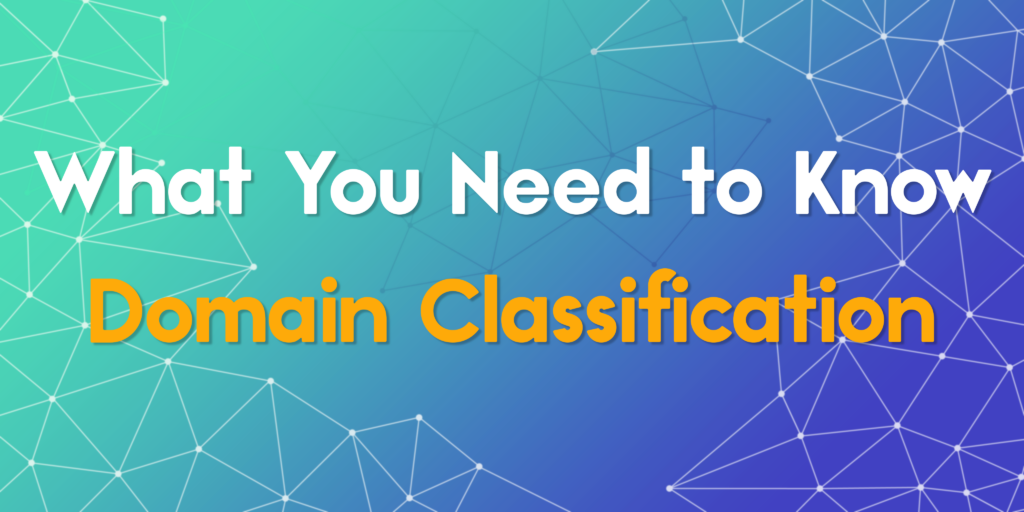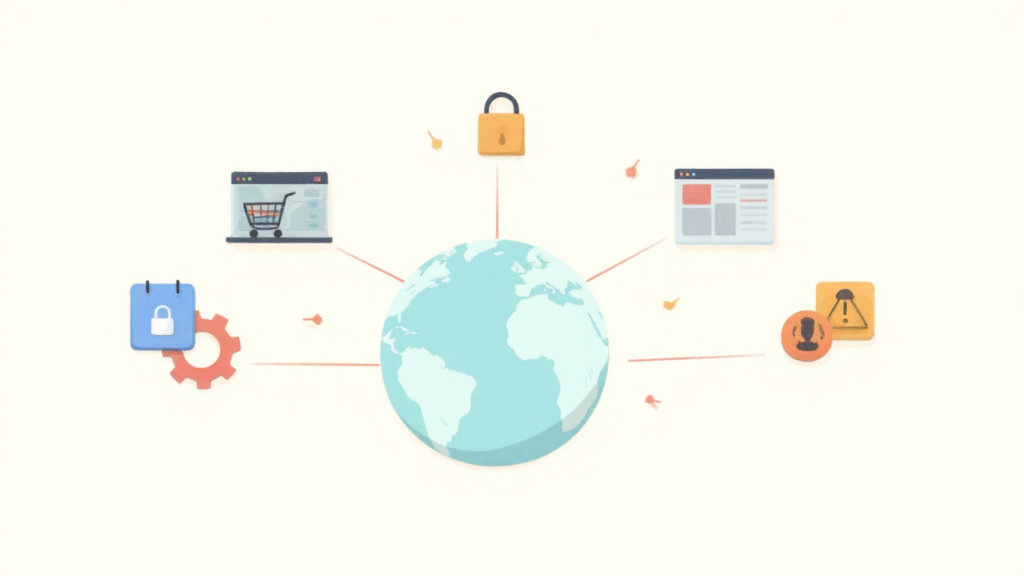Domain Classification: What You Need to Know

Domain classification plays a crucial role in organizing the vast amount of content found across the internet. Whether you are running a website, managing digital marketing strategies, or working in cybersecurity, understanding how domains are sorted and evaluated can bring significant advantages. This blog explores how domain classification works, how it affects search engine rankings, and how proxy solutions can help you navigate domain-based restrictions. We will also dive into its role in combating malicious websites and supporting content compliance across different platforms. If you have ever wondered how the web stays organized and safe, or how businesses optimize their visibility online, this guide is for you.
What is Domain Classification
Domain classification is the process of categorizing internet domains based on their content, behavior, and purpose. It serves as a sorting mechanism that helps search engines, firewalls, ad networks, and cybersecurity tools decide how to treat a specific website. Domains may be classified as news, entertainment, e-commerce, malicious, educational, or any number of other categories. This classification influences everything from search engine rankings to user access and ad placements.
The backbone of domain classification lies in automated crawlers and machine learning algorithms that continuously scan and analyze websites. They look at textual content, metadata, user engagement, and technical signals such as SSL certification or suspicious redirects. These insights feed into a larger system that governs how a domain is interpreted across the digital ecosystem.
Why Domain Classification Matters in Cybersecurity
Cybersecurity relies heavily on accurate domain classification. Organizations use classification data to identify and block malicious websites that could compromise user data or deploy malware. Systems such as web filters and intrusion prevention tools utilize real-time classification updates to protect end users from emerging threats. A misclassified domain can either leave users vulnerable or block legitimate access, so the accuracy of this process is vital.
One of the key benefits of domain classification in cybersecurity is the early detection of phishing campaigns. When a new domain is registered and its content mirrors a banking or login portal, classification engines can flag and isolate it even before it launches a full attack.
Impact of Domain Classification on Search Engine Rankings
Search engines like Google use domain classification as part of their algorithm to decide how and where to display a website in search results. Websites that are classified under trustworthy and relevant categories are more likely to rank higher. On the other hand, if a site is labeled as spammy, adult content, or malicious, it may be penalized or excluded from rankings entirely.
This creates a direct connection between classification and digital marketing efforts. Marketers need to ensure that their sites are categorized appropriately to reach their intended audience. Incorrect classification can derail even the most well-planned SEO strategy. That is why many businesses monitor how their domains are being classified and work to optimize them accordingly.
Using Domain Classification for User Content Restrictions
Social platforms, parental control tools, and enterprise IT systems all use domain classification to regulate access. For instance, companies can restrict employee access to gambling or social media sites during work hours. Parents can block adult or violent content from their children’s devices. Schools can ensure students are only accessing educational resources during class time.
These restrictions are powered by large classification databases that sort domains into thousands of categories. By subscribing to these services, organizations can tailor the web experience for specific users without needing to manually blacklist every inappropriate site. This also applies in large-scale network environments like libraries, universities, and corporate offices.
How Proxy Can Help Navigate Domain Classification Barriers

Proxies can play a strategic role in managing how domain classification affects your online activities. In digital marketing, proxies are used to verify how a site appears from different geographical locations, helping teams detect regional classification inconsistencies. A domain may be seen as safe in one country but flagged in another, affecting accessibility and rankings.
In testing environments, developers use proxies to simulate access from various IPs and ensure their websites are not being misclassified. This is especially useful when launching a new site or dealing with rebranding, as incorrect classification during early stages can have long-lasting impacts. Moreover, proxies help cybersecurity professionals test and audit domain filtering systems without putting real user data at risk.
For users in restricted regions, proxies offer a way to access content that may be blocked due to domain classification rules enforced by governments or ISPs. This is particularly relevant for educational and journalistic websites that get unfairly restricted due to misclassification or overreaching filtering policies.
Machine Learning and the Evolution of Domain Classification
The future of domain classification is being shaped by artificial intelligence. Advanced models are learning to detect subtle signs of malicious behavior and categorize content with greater nuance. Instead of relying on manual review or simple keyword scanning, AI systems can understand the context and intent behind content.
For example, two websites discussing gambling might be classified differently if one is educational and the other promotes betting. This level of granularity was difficult to achieve with older classification systems. AI also allows systems to adapt to the fast-changing web, identifying new threats and trends as they emerge.
Challenges and Considerations in Domain Classification
While domain classification offers many benefits, it is not without challenges. Misclassification remains a persistent issue, and even large-scale systems are not immune to false positives. This can result in lost revenue, blocked services, and decreased search visibility. Businesses must be proactive in monitoring their domain’s status and reaching out to classification providers if they identify issues.
Another consideration is privacy. Classification engines often collect user data to improve accuracy, which raises concerns about how that data is stored and used. Users and businesses should review the data policies of any classification service they depend on and consider using proxies to limit unnecessary data exposure.
Final Thoughts on Mastering Domain Classification
Domain classification is a foundational concept for anyone working in digital spaces. Whether you are concerned with cybersecurity, digital marketing, or access control, understanding how and why domains are categorized empowers you to take smarter actions. From improving your search engine rankings to protecting users from malicious websites, domain classification touches nearly every aspect of online operations.
Proxies enhance this ecosystem by offering a flexible and privacy-conscious way to test, validate, and work around classification systems. With the growth of machine learning, domain classification is becoming more accurate and contextual than ever before. But staying informed and actively managing your domain’s presence remains a critical task for individuals and organizations alike.
By grasping the principles of domain classification and using tools like proxies, you can better navigate the digital world, avoid pitfalls, and ensure your content reaches the right audience in a safe and optimized way.